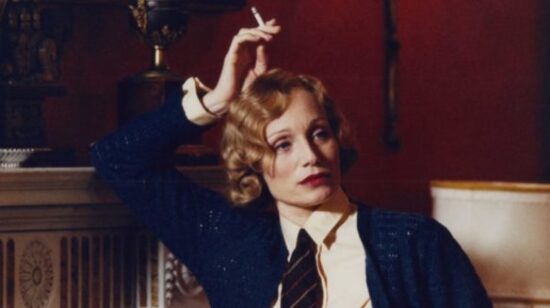
“I learned the rules of the game from The Rules of the Game,” said Robert Altman about Gosford Park (2001), inspired by Jean Renoir’s La règle du jeu (1939). On the surface, Renoir’s film takes the superficial form of a country house farce resulted in an accidental death, a case of mistaken identity, while Gosford Park employs the genre of the classic British murder mystery, as defined by Agatha Christie: guests and servants gather at a stately house and one of them is murdered. But just as The Rules of the Game is “a fusion of moral statement and social observation, of comedy and tragedy, of fantasy and cruelty, the culmination of Renoir’s quest for la drame gai”, as Andrè Bazin wrote in the book Jean Renoir, Altman uses the setting of the murder mystery but surpasses its limitations and makes it his own, a sardonic, deeply layered story of greed, snobbery, eccentricity and class exploitation. Two satires of two different societies and cultures.
Renoir depicts the ruling class as silly adulterers, with the working class emulating them at smaller scale. He shows husbands and wives, lovers and cheaters, masters and servants sneaking behind doors and into each other’s bedrooms and pretending they are all suitable representatives of a well ordered society. Gosford Park begins with perfect order, too, where everyone up and down the ladder class seems to know their place. Until that order is disrupted by murder and disclosures of unexpected interlinks between the classes, unveiling a labyrinthine plot. Set in 1932, the action unfolds during a weekend shooting party hosted by Sir William McCordle (Michael Gambon) and his wife, Lady Sylvia (Kristin Scott Thomas), at his estate, Gosford Park. Among the guests are friends, relatives, the actor Ivor Novello (Jeremy Northam) and an American producer, Weissman (Bob Balaban, also one of the screenwriters on Gosford Park). Helen Mirren, Alan Bates, Richard E. Grant, Maggie Smith, Clive Owen, Emily Watson, Ryan Phillippe and Geraldine Somerville round the cast. The hunting party is a rehearsal for the party at the estate and this idea came right out of Renoir’s The Rules of the Game.
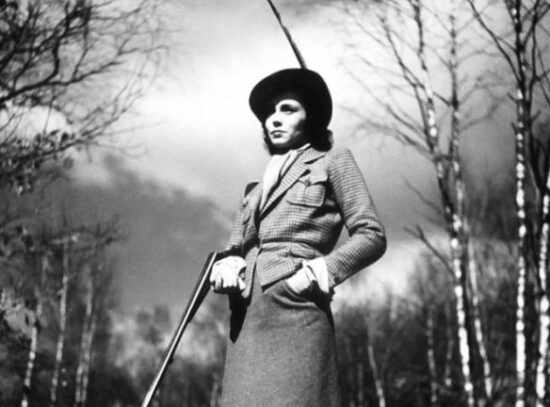
Renoir has a shooting party followed by a party at the château, too, but the game (the game of hunting, the game of love) is much more complex. Renoir’s film is now considered one of the greatest films ever made, but when it was released it was both a critical and public failure, it was soon after subjected to cuts and banned by the French government as demoralizing and unpatriotic and the original negative was destroyed during World War II, to be reconstructed only in 1959. It is a brilliantly constructed film, an intricate flux of movements and events, an extraordinary web of allusions, parodies and recurring motifs, where no scene is unnecessary, where every line of dialogue counts and has hidden meaning, and where the camera becomes one of the characters – it always looks like there are more scenes than one happening in one frame and the photography of The Rules of the Game is considered the precursor of the depth of field in cinematography.
It is the film in which Jean Renoir, the most humanist of directors, showed best his sense and taste of comedy that comes from his deep understanding of human nature and tragedy and his great ability of adapting his artistic sensibility to the realities of the contemporary world. La règle du jeu was made on the brink of the Second World War and it is the most advanced expression of prewar French realism, a portrayal of a corrupted, rarefied, ignorant, decadent society and of a morally defunct upper-class on the eve of the outbreak of world disaster. “When I made The Rules of the Game, I knew where I was going. I knew the evil that gnawed at my contemporaries. My instinct guided me, my awareness of the imminent danger led me to the situations and the dialogue. And my friends were like me. How worried we were! I think the film is a good one. But it is not difficult to work well when the compass of anxiety points in the true direction.”
The Rules of the Rules opens with aviator André Jurieux (Roland Toutain) completing a trans-Atlantic solo flight (ten years after Charles Lindbergh) only to lament at arrival because the woman he loves has not come to meet him. The rest of the action mostly takes place at La Coliniere, the country estate of the Marquis Robert de la Chesnaye (Marcel Dalio) and his wife, Christine (Nora Gregor), the love interest of Jurieux. Among the guests invited are socialite Geneviève (Mila Parely), Robert’s mistress, Jurieux and Octave (Renoir himself), the confidant and go-between to all of them. Lisette (Paulette Dubost) is Christine’s maid, who prefers attending to her madame in Paris instead of being a wife to Schumacher (Gaston Modot), de la Chesnaye’s gamekeeper at La Coliniere, and when she does arrive at the estate she starts to fool around with another servant, Marceau (Julien Carette).
In an interview with Marguerite Russot, for the January 1939 issue of Pour Vous, Renoir explained the scenario of La règle du jeu: “A precise description of the bourgeoisie of our age. I want to show that for every game, there are rules. If you don’t play accordingly, you lose.” But added that “but what I want to convey in this film is my great love for women. To do this, I have to show men, men who talk about women, who say everything that can be said about them.” Andrè Bazin observed that “the party at the château is a game, but it is nevertheless a game whose absurd rule is to die of love.” Because the real hunting party occurs at the château – and what confusion, chaos and finally tragedy will this unfold. When one of the characters comments upon Christine kissing Jurieux, another one observes: “We are here to hunt, not to write our memoirs.” The characters racing through the corridors, the exchanges of identity between masters and valets, gamekeeper Schumacher shooting at his wife’s suitor, these constitute the real hunt.
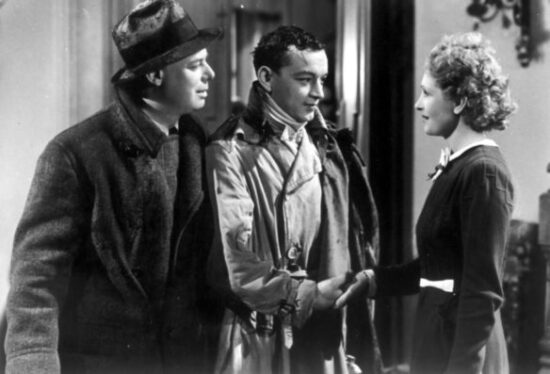
That exchange of identity between masters and valets is differently but interestingly employed in Altman’s film. Downstairs, to avoid confusion, the valets and maids are referred to not by their real name, but by the names of their respective masters and ladyships. Carefully composed and textured, Gosford Park is a comment on hierarchy, a sharp comparison between the idle, aimless, glamorous above-the-stairs life and the tireless, backbreaking work necessary below-the-stairs to make it happen. One of the most suggestive ways to accomplish this contrast is through costumes. The ones upstairs wear what they like and the most luxurious clothes, the ones downstairs wear uniforms. There is no mingle between the classes, not as far as the clothes are concerned. “Didn’t you hear me? I am the perfect servant. I have no life of my own,” Helen Mirren’s character, Mrs. Wilson, says in Gosford Park. For the English, the working class’s meaning is to serve. “You shouldn’t sneak up on people like that,” says Isobel (Camilla Rutherford) when a valet surprises her talking intimately to one of the guests, Freddie (James Wilby), a married man. “Don’t worry about him, he’s nobody,” the man tells her.
Things are different with the French. The working class simply wants to emulate the ruling class, and the upper-class lets them. Christine takes her maid Lisette’s cloak without a moment’s thought because she can’t stand spending another moment in the house, and when a poacher, Marceau, is hired by de la Cheyniest as valet, he is happy because “I have always wanted to be a servant. Because of the clothes. I’ve always wanted to wear a suit.” The suit is a way to mimic the nobility. But Renoir’s message goes deeper than that. A guest to the house, a general, makes the following observation not once, but twice: “She has a touch of class, that’s a rare thing these days,” and that has nothing to do with the title of the one he is referring to, although she is part of the aristocracy. For Renoir, the matter of true nobility is not one of blood, but of the heart.

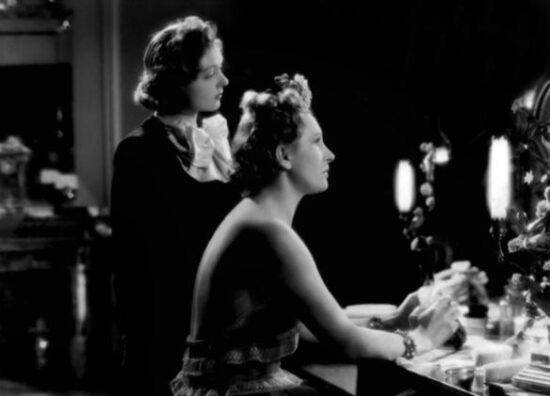
I believe Coco Chanel understood very well this nobility of the heart. She was a self-made woman, with the surest touch in fashion and the shrewdest sense for business, who not only imposed on the French and on the whole world the elements of the Chanel style, she imposed style and came to represent the epitome of class. She was born poor and then made a fortune and her clothes were not made to give women an aura of wealth, but of class, the kind of class that has nothing to do with social hierarchy.
Chanel made the costumes for La règle du jeu. Kristin Scott Thomas also wears one Chanel dress, from my knowledge, in Gosford Park (see the below image). But Lady Sylvia’s entire wardrobe (costume design by Jenny Beavan), from her bias cut white evening dress and little black dresses to her little riding tweed jackets and buttoned-up shirts worn with ties and knitted cardigans, hints at Coco Chanel, beautifully reconciling modernism and tradition, French chic and English good taste. After all, Coco Chanel spent a lot of time in England during her relationship with The Duke of Westminster and knew not only how to impress the English, but drew inspiration from them as well. “At Eaton, Chanel slipped into the role of châtelaine with the same ease as she wore her silk fringed evening gowns, in sapphire blue or black, designed so as no to crease when they were packed for travelling,” writes Justine Picardie in the book Coco Chanel: The Legend and the Life. Chanel’s love affair with the Duke was reflected in her new designs. She not only understood that the clothes had to be more formal in England than for similar occasions in France, but won the admiration of the British with the element of youth she brought to the classics. Chanel’s practical sense of style made sense on both sides of the channel.
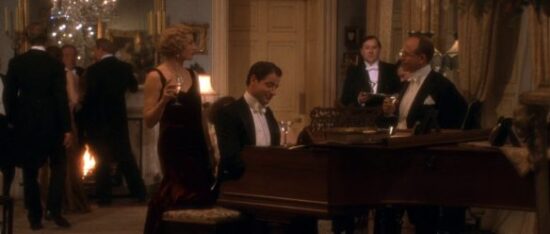
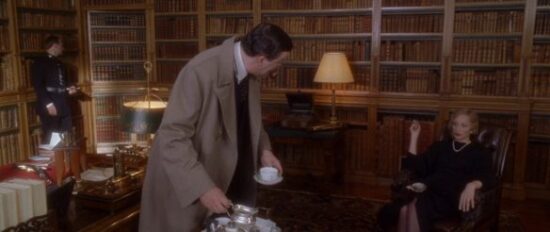
Coco Chanel loved men’s fashion, wanted to free women from the constraints of what was considered acceptable women’s fashion, and soon started to blend menswear and womenswear and to adopt men’s clothes into her own wardrobe and designs. At Lochmore, she borrowed the Duke’s clothes, making his tweeds her own, and wearing them with an elegance not usually associated with traditional sporting attire. She then started to source fabrics from a Scottish tweed mill for her signature little jackets and suits. She also adopted the uniforms and striped waistcoats of the footmen and butlers at Eaton, transforming them into what Vogue and Harper’s Bazaar dubbed “Chanel’s English Look”, which “also included the loose woolen cardigans that she herself wore with the yards of real pearls that the Duke gave to her,” as Picardie writes.
When Geneviève arrives at the château in La règle du jeu, she takes her cheetah-fur coat off and keeps the belt to fasten over her skirt. Make it functional. Minimalize. That’s true sophistication. The skirt has pockets, of course, and it cuts right below the knees in a straight line. She wears it with a buttoned-up white shirt and two strings of pearls over it. Classic Chanel. At the shooting party, both Christine and Geneviève are wearing tailored tweeds, skirts and double-breasted waist-lined jackets, each jacket with rear vents and inverted pleats that allow freedom of movement for the game of shooting. The camera even captures from behind this mobility of the clothes when Christine aims to shoot. La petit robe noir makes its appearance, too, a couple of times. Both versions are worn by Christine, the first one is a day dress, simple and practical, with white collar, cuffs and a little white ribbon subtly placed at the waist, the other one is a silk cocktail dress, elbow-sleeved and with a low neckline fastened by a brooch at the chest. Christine hardly wears anything too lavish, except for the white fur at the beginning of the movie and a white silk night robe later on. It is Geneviève who dresses more exotic – a luxurious embroidered robe when we first meet her, a gold lamé dress at the party, a white night robe with its huge sleeves covered in white fur. Both women’s looks encapsulate their characters best and prove that, for The Rules of the Game, Coco Chanel was a costumière, not merely a fashion designer, albeit a fashion designer who changed fashion forever.
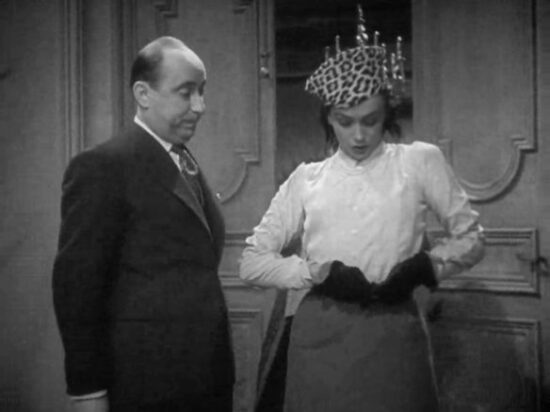
This piece is published courtesy of classiq.me
Photos courtesy of USA Films, Capitol Films & Nouvelles Éditions de Films
